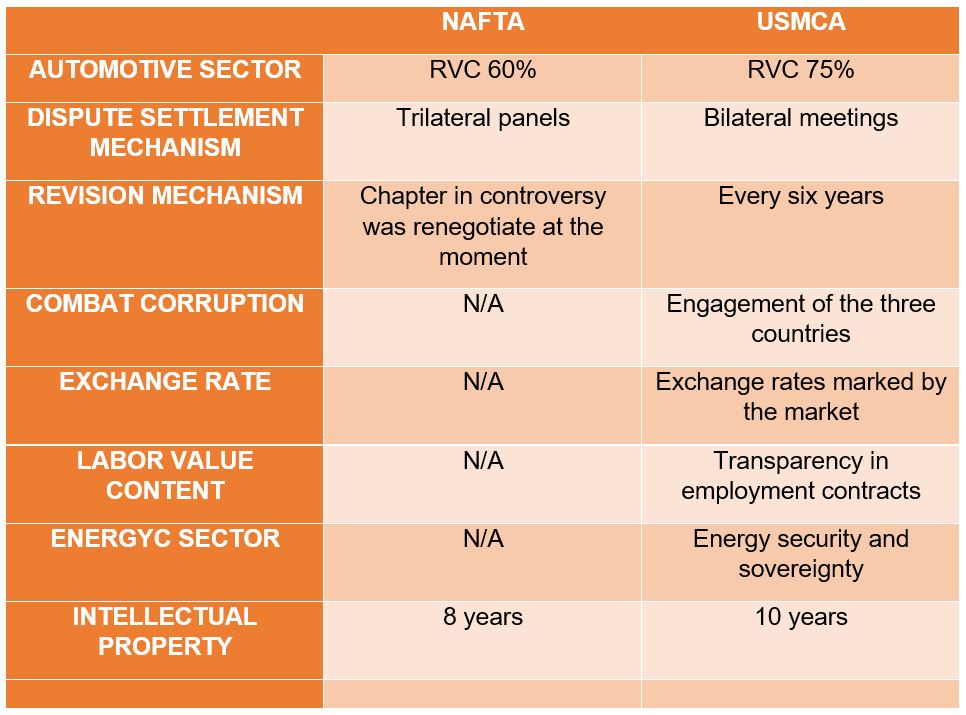This is the final installment in a three-part series addressing the challenges and implications of the United States-Mexico-Canada Agreement (USMCA)
This is the final installment in a three-part series addressing implications of the United States-Mexico-Canada Agreement (USMCA). It was written by Alexandra Márquez and Arlette Molina, both analysts in Global Trade Content for Thomson Reuters. You can read Part One and Part Two of this series here.
On April 24, the Trump administration notified Congress that the U.S.-Mexico-Canada Agreement (USMCA) would take effect on July 1. That’s 21 months after the three countries reached an agreement in principle on the replacement for the North American Free Trade Agreement (NAFTA), which was enacted in 1994.
Entities including the Canadian Chamber of Commerce, Canadian dairy industry, automakers, and the U.S. Senate Finance Committee recommended postponing implementation of the pact due to the global COVID-19 pandemic and the fact that companies are laser-focused on maintaining and managing their supply chains and production capacities during this crisis.
U.S. Trade Representative Robert Lighthizer, however, countered that “the crisis and recovery from the COVID-19 pandemic demonstrates that now, more than ever, the United States should strive to increase manufacturing capacity and investment in North America.
“The USMCA’s entry into force is a landmark achievement in that effort,” Lighthizer continued, contending that under President Trump’s leadership, the Office of the United States Trade Representative will “continue working to ensure a smooth implementation of the USMCA so that American workers and businesses can enjoy the benefits of the new agreement.”
Whether or not the time is right, the USMCA, it appears, is upon us.
What’s new?
The renewed agreement between the United States, Mexico, and Canada may indeed bolster the economy in North America given that it adapts the disciplines of NAFTA to the current needs of the 21st century economy. In the mid-1990s, NAFTA established trade liberalization commitments and set new rules for market-opening provisions that gradually eliminated nearly all tariff and most non-tariff barriers.
For more on this subject, join us for a one-hour webinar, What to Expect in USMCA’s New Origin Rules, at 2 pm EDT on June 4.
Now, USMCA’s implantation arguably will increase the confidence of companies and investors. Comprising 34 chapters and 12 side letters, the agreement retains most of NAFTA’s market-opening measures as well as new provisions to make commerce more inclusive by facilitating the participation of entrepreneurial and small- to medium-sized enterprises (SME). The USMCA also makes notable changes to auto rules of origin, dispute settlement provisions, government procurement, investment, and intellectual property rights protection while bolstering employee protections and measures to combat corruption. The USMCA also includes commitments to administer customs procedures in ways that will facilitate trade or the transit of goods while supporting compliance with domestic laws and regulations.
Compared with NAFTA, the new agreement incorporates tools for:
-
-
- boosting the development and an efficient use of energy resources;
- promoting digital commerce;
- facilitating the trade of financial services;
- encouraging the competitiveness of telecommunications;
- fortifying the protection of intellectual property;
- retaining dispute settlement mechanisms; and
- bringing in a revision mechanism.
-
The more notable updates are listed in the following chart.

As evidence this is an innovative accordance, USMCA also includes:
-
-
- more stringent rules of origin for goods including chemicals, automotive products, televisions, optical fiber, glass, and steel;
- reinforcement of protections in the transmission of data, free flow of information, and free access to public data;
- patent protection for new innovations such as pharmaceutical products, chemical processes, business technologies, and computer software;
- copyrights providing creators of artistic and literary works with the exclusive right to authorize or prohibit others from reproducing, communicating, or distributing their works;
- dispute settlement mechanisms for labor and environmental conflicts;
- recognition of the SME sector as a reinforcement for the global value chains; and
- anticorruption practices to prevent corruption with established obligations for public and private sector.
-
In conclusion, the USMCA contains provisions needed by all three countries, because the North American commercial environment has changed dramatically since NAFTA was enacted a quarter-century ago. The new agreement solves many of the deficiencies and mistakes in NAFTA and will bring the U.S., Mexico, and Canada together as a global competitive force.
And to reiterate: It not only benefits commercial enterprises. Provisions protecting workers will establish new labor standards including a process for inspections of factories and facilities to confirm they are meeting their obligations.
This is a big step in ensuring fair treatment of the people who make trade and economic prosperity happen. And it also may serve as a model for other nations as they revise and modernize their trade agreements.




